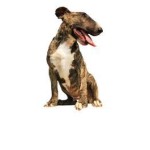I have written on many occasions on the benefits of grain free dog food, and have learned some new information! True, any grain filled dog food can create a full system allergy reaction, general poor health, and malaise in your dog. The benefits of shelf food are only with the ability to have the food available at any time. However, you can still be healthy, and feed off the shelf. It isn’t about GRAIN FREE but more so, being a different kind of grain.
Grain is not the same throughout the Globe
If America wants to stay competitive, they could learn a few steps from the Canada and EU grain producers. First they grow mostly organic grain produce. Secondly, they move all their agriculture through a round-up free environment. Alas, America is saturated with Glyphosate or Round-up. Cleaner produce equals cleaner grain product. With many long term plans toward excellent production in agriculture, the exported grain is far superior in health.
Buy Grain Free in America | Buy Grain from Canada, EU or New Zealand
Even protein can be impacted greatly by sketchy grain fed to animals during the livestock growth processes in America. Each day, more and more pet parents become more aware of the benefits of sticking with American Grain Free, but also, finding good protein within that grain free food. So, how do you know it is good protein? If the protein is raised organically, within grass fed pastures until slaughter, you have a good food. It is truly sad that we have to endure this kind of screening on our pet food, but if you are not doing the same for yourself as well, you are missing out on a lifetime of good health.
Buy Kiwi for Joint and Good Protein Health-And other Recommendations
Here are some great foods to consider, at the time of this writing:
Purina Pro Plan
All dog breeders are aware that Purina Pro Plan is not like the Purina options in the big box stores. They are selective and have a wide range of protein, fiber and fats for your dog’s specific breed, size, and lifestyle. What you can do, is visit their website for a quiz, and they will guide you towards your dog’s perfect variety of Purina Pro Plan. If you have three dogs, chances are, all three will need to have three different food offers. It is ok, as if you can bring them good nutrition, you can allow them to save you money by staying away from the vet.
Here is the link for the quiz! https://www.proplan.com/myplan
Nutri Source Adult -Chicken & Rice
We recently added a standard poodle to our family, and I was shocked to learn our very experienced poodle breeder was feeding this food, from puppy to adult. Of course, puppy variety for puppy age, and the adult version for any dog older than a year. She has had excellent results on this food! We have added it to our regime, and have found the dogs love it. It has grain, but, it has a good variety of probiotics and good lower protein levels. I highly recommend this as your only food, if you are looking to buy from a big box, or are cutting costs. It will be a very good option. You can buy it on Amazon too.
Royal Canin
Our friends in France and our Vet recommends this brand of dog and cat food. We have had excellent results with our older cat on this brand. Take their advice, and buy to the breed, or to the health concern. The grain is safe, the protein too. An excellent food that our dogs and cats love.
Earthborn Holistic Great Plains
Another great recommendation comes from Chewy.com where you can find good options for cats and dogs alike. Loved by our cats and dogs, it is a grain free option, that will stay fresh on your shelf, until you need to rebuy. I find the primitive option has worked very well for our pets.
Taste of the Wild
Both cats and dogs like the grain free option, and it is tasty and a good value!
Ziwi Peak Air-Dried Lamb Dog Food, 8.8-lb bag
My favorite addition is expensive, however, the green mussels in the food and the fact it comes from New Zealand will allow you to look no further. All dogs should be on this food. Cats will not enjoy it, unless they are forced to try. Feed big dogs at least a cup a day, Feed little dogs this and this alone. You will be saving life with this food!
cheers to you and your furry herd!


